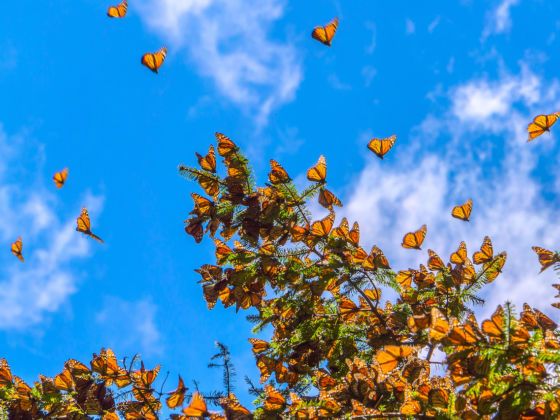This is the first installment in a new column, Spotting Wildlife. Each month we’ll highlight an animal that you can see — or at least try to see — in the United States.
Humans may not be doing much traveling this spring, but that doesn’t mean the entire world is grounded. Across the globe, the arrival of spring signifies migration time for dozens of species. For residents of the US and southern Canada, no seasonal resident marks the coming of warmer days more so than the monarch butterfly.

